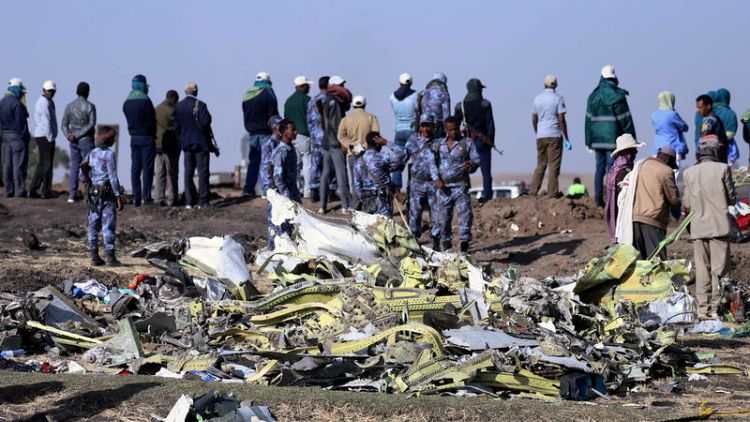By David Shepardson and Tim Hepher
WASHINGTON/PARIS (Reuters) - An anti-stall system at the centre of a probe into the crash of a Boeing 737 MAX jetliner in Indonesia five months ago was also at play when an identical aircraft crashed in Ethiopia earlier this month, three people briefed on the matter said.
Data pulled from the Ethiopian Airlines flight recorder suggests the so-called MCAS system, which pushes the nose of the jet downwards, had been activated before the jet ploughed into a field outside Addis Ababa on March 10, the people said, speaking on condition of anonymity ahead of an interim official report.
Boeing and the Federal Aviation Administration declined to comment on the data, first reported by the Wall Street Journal.
It is the second related piece of evidence to emerge from the black boxes of Ethiopian flight 302 after an initial sample of data recovered by investigators in Paris 11 days ago suggested similar "angle of attack" readings to the first crash.
These initial airflow readings from the Ethiopian jet, first reported by Reuters, refer to stall-related information needed to trigger the automated nose-down MCAS system.
The system is designed to be activated only when the angle of attack - measuring the way the wing cuts through the air - has become too high to avoid the plane stalling or losing lift.
However, it was not immediately clear whether the system on the Ethiopian jet was responding to faulty sensor data, as in the case of the earlier crash, or genuine stall indications.
Ethiopian, French and U.S. officials have said there are similarities between the two accidents, which led to the worldwide grounding of the recently introduced 737 MAX.
An Ethiopian-led investigation is trying to establish whether the system overpowered the pilots, a leading scenario in the Lion Air crash, and what action was taken by the crew.
Boeing has suggested using two existing cut-out switches could have prevented the Lion Air disaster, but it has also announced proposals to beef up the system and improve training.
Two of the people briefed on the matter said they presumed that the Ethiopian Airlines pilots did not hit the cut-out switches based on the airplane's speed and fatal descent, but could not confirm that the data established that.
(Reporting by David Shepardson, Tim Hepher, Editing by Sarah White)
